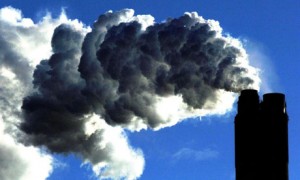 The amount of greenhouse gases (GHGs) in the atmosphere reached a new record high in 2012, continuing an upward and accelerating trend which is driving climate change and will shape the future of our planet for hundreds and thousands of years.
The amount of greenhouse gases (GHGs) in the atmosphere reached a new record high in 2012, continuing an upward and accelerating trend which is driving climate change and will shape the future of our planet for hundreds and thousands of years.
A GHG is a gas in an atmosphere that absorbs and emits radiation within the thermal infrared range. This process is the fundamental cause of the greenhouse effect.The primary greenhouse gases in the Earth’s atmosphere are water vapour, carbon dioxide CO2), methane, nitrous oxide, and ozone.
A recent edition of the World Meteorological Organisation’s annual Greenhouse Gas Bulletin released last week shows that, between 1990 and 2012, there was a 32 percent increase in radioactive forcing – the warming effect on our climate – because of CO2 and other heat-trapping long-lived gases such as methane and nitrous oxide.
Carbon dioxide, mainly from fossil fuel-related emissions, accounted for 80 percent of this increase. The atmospheric increase of CO2 from 2011 to 2012 was higher than its average growth rate over the past ten years, according to the Greenhouse Gas Bulletin.
Since the start of the industrial era in 1750, the global average concentration of CO2 in the atmosphere has increased by 41 percent, methane by 160 percent and nitrous oxide by 20 percent.
“The observations from WMO’s extensive Global Atmosphere Watch network highlight yet again how heat-trapping gases from human activities have upset the natural balance of our atmosphere and are a major contribution to climate change,” said WMO Secretary-General, Michel Jarraud.
“The Intergovernmental Panel on Climate Change (IPCC) in its recent 5th Assessment Report stressed that atmospheric concentrations of carbon dioxide, methane, and nitrous oxide have increased to levels unprecedented in at least the last 800,000 years,” he said.
“As a result of this, our climate is changing, our weather is more extreme, ice sheets and glaciers are melting and sea levels are rising,” said Jarraud.
“According to the IPCC, if we continue with ‘business as usual,’ global average temperatures may be 4.6 degrees Centigrade higher by the end of the century than pre-industrial levels – and even higher in some parts of the world. This would have devastating consequences,” he said.
“Limiting climate change will require large and sustained reductions of greenhouse gas emissions. We need to act now, otherwise we will jeopardise the future of our children, grandchildren and many future generations,” said Jarraud. “Time is not on our side,” he added.
